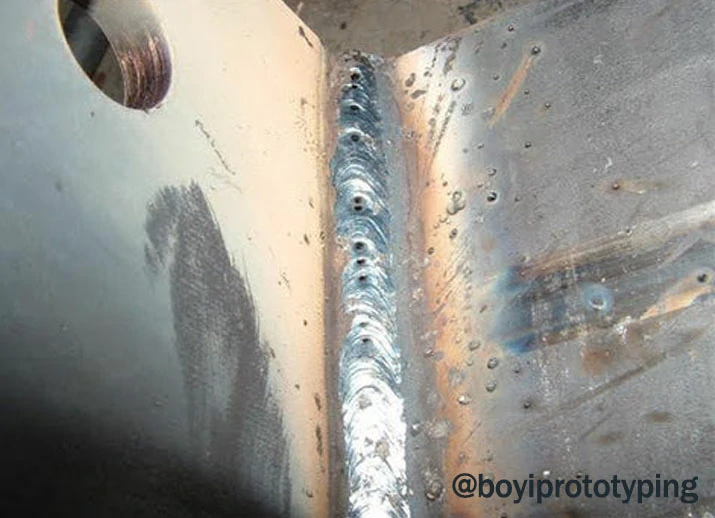What is Porosity in Welding: Secret Variables and Their Influence On Weld Top Quality
What is Porosity in Welding: Secret Variables and Their Influence On Weld Top Quality
Blog Article
Recognizing Porosity in Welding: Checking Out Causes, Effects, and Prevention Strategies
As experts in the welding sector are well mindful, understanding the reasons, impacts, and prevention methods connected to porosity is vital for attaining robust and reliable welds. By diving right into the origin triggers of porosity, analyzing its detrimental effects on weld high quality, and discovering effective avoidance strategies, welders can enhance their knowledge and skills to generate high-quality welds consistently.
Common Sources Of Porosity
Contamination, in the form of dirt, grease, or rust on the welding surface area, develops gas pockets when heated, leading to porosity in the weld. Improper shielding occurs when the shielding gas, generally utilized in processes like MIG and TIG welding, is unable to completely safeguard the molten weld pool from responding with the surrounding air, resulting in gas entrapment and subsequent porosity. Furthermore, inadequate gas protection, frequently due to wrong flow prices or nozzle positioning, can leave components of the weld vulnerable, allowing porosity to develop.
Results on Weld Quality
The visibility of porosity in a weld can significantly jeopardize the total quality and stability of the welded joint. Porosity within a weld develops gaps or cavities that weaken the framework, making it much more at risk to fracturing, corrosion, and mechanical failing.
Furthermore, porosity can hinder the efficiency of non-destructive screening (NDT) methods, making it challenging to find various other problems or suspensions within the weld. This can lead to significant security problems, specifically in essential applications where the architectural honesty of the welded components is extremely important.

Prevention Techniques Summary
Offered the destructive impact of porosity on weld high quality, effective prevention methods are vital to preserving the architectural honesty of bonded joints. Additionally, picking the ideal welding criteria, such as voltage, present, and take a trip speed, can assist reduce the danger of porosity formation. By including these prevention methods into welding techniques, the incident of porosity can be substantially minimized, leading to more powerful and extra reliable bonded joints.
Relevance of Appropriate Shielding
Proper securing in welding plays a vital role in avoiding climatic contamination and ensuring the stability of welded joints. Securing gases, such as argon, helium, or a blend of both, are typically used to shield the weld swimming pool go from responding click here now with components airborne like oxygen and nitrogen. When these reactive elements enter call with the hot weld pool, they can trigger porosity, leading to weak welds with lowered mechanical residential or commercial properties.

Insufficient protecting can lead to various flaws like porosity, spatter, and oxidation, compromising the structural stability of the bonded joint. For that reason, adhering to correct securing practices is important to generate high-grade welds with marginal flaws and make certain the durability and dependability of the welded elements (What is Porosity).
Surveillance and Control Techniques
Just how can welders successfully monitor and control the welding process to make certain optimal results and prevent problems like porosity? By constantly keeping track of these variables, welders can determine variances from the perfect conditions and make prompt modifications to protect against porosity development.

Furthermore, carrying out correct training programs for welders is essential for monitoring and controlling the welding procedure properly. What is Porosity. Enlightening welders on the relevance of preserving regular criteria, such as appropriate gas securing and travel rate, can help prevent porosity concerns. Normal evaluations and accreditations can additionally guarantee that welders excel in monitoring and managing welding processes
Additionally, making use of automated welding systems can enhance monitoring and control capacities. These systems can precisely control welding criteria, minimizing the chance of human mistake and guaranteeing constant weld high quality. By incorporating sophisticated monitoring innovations, training programs, and automated systems, welders can properly my link monitor and manage the welding procedure to lessen porosity flaws and accomplish premium welds.
Final Thought

Report this page